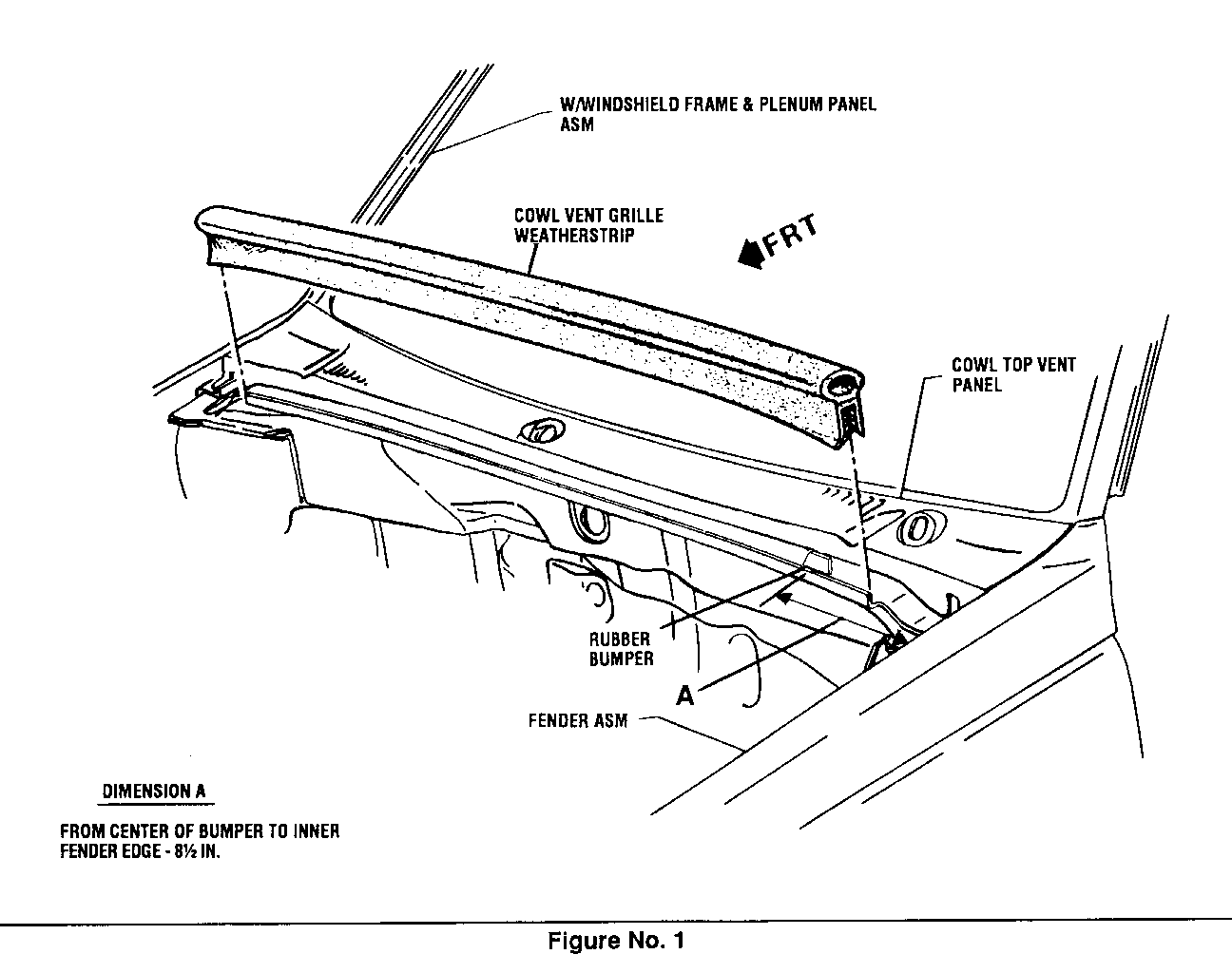FLUTTERING CONDITION REAR HOOD EDGE

SUBJECT: HOOD PANEL REAR EDGE FLUTTER
MODELS: 1989-91 S/T VEHICLES
The rear hood edge of some 1989 through 1991 S/T Vehicles may exhibit a fluttering condition. A field repair has been tested and has proven effec- tive in correcting this condition. This is done by means of rubber hood bumpers (hood stops) which exert a pressure to the underside of the hood. This eliminates the freedom of motion that the hood is experiencing.
SERVICE PROCEDURE
To repair this condition do the following:
1. Obtain two rubber hood bumpers part #458306.
2. Measure 8 and 1/2 inches along lower cowl panel from the inboard side of the front fenders as shown in Figure 1 dimension "A".
3. Place bumper so that the middle of the bumper lines up with the inboard measurement.
4. Remove the old contact adhesive by sliding the hood stop against a smooth surface. Using 400 grit sand paper very lightly scuff the surface areas to be glued for maximum adhesion.
NOTE: If the placing of the hood stops under the hood causes the hood to rise to more than 118 of an inch above the cowl panel then, remove some of the rubber from the top of the bumper using a razor blade or sharp knife and continue until an acceptable height is achieved.
5. Use wheatherstrip adhesive 12345097 to glue bumpers to vehicle.
PARTS INFORMATION
Part Number Description #Per Vehicle 458306 Rubber Hood 1 per side Bumper 12345097 Weatherstrip As needed Adhesive
Parts are currently available through GMSPO.
WARRANTY INFORMATION
For vehicles repaired under warranty use:
Labor Operation: T7600
Labor Time: 0.2 hr.
NOTE: Labor Operation is coded to base vehicle coverage in the warranty system.

General Motors bulletins are intended for use by professional technicians, not a "do-it-yourselfer". They are written to inform those technicians of conditions that may occur on some vehicles, or to provide information that could assist in the proper service of a vehicle. Properly trained technicians have the equipment, tools, safety instructions and know-how to do a job properly and safely. If a condition is described, do not assume that the bulletin applies to your vehicle, or that your vehicle will have that condition. See a General Motors dealer servicing your brand of General Motors vehicle for information on whether your vehicle may benefit from the information.
